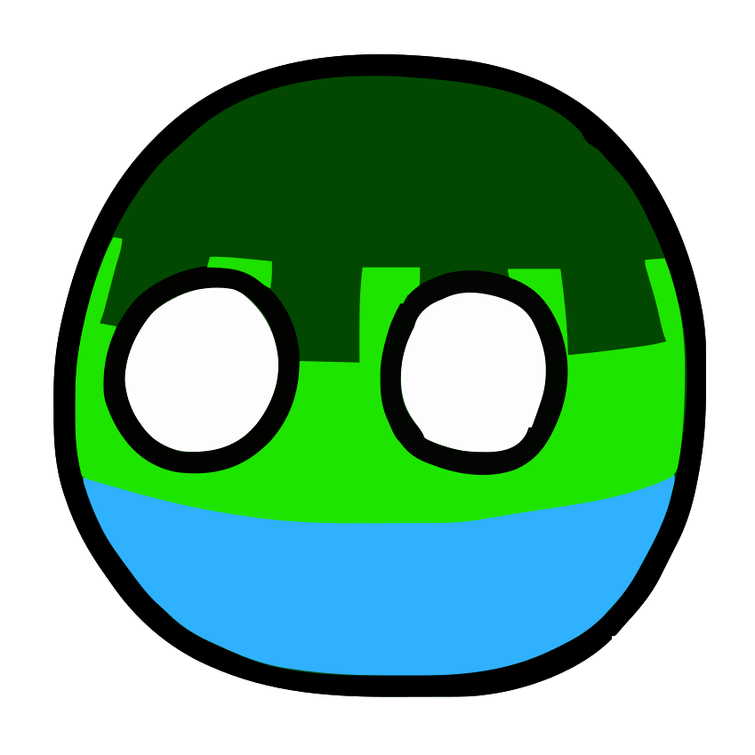Guinea-Bissau: Difference between revisions
No edit summary |
No edit summary |
||
| Line 29: | Line 29: | ||
== History == | == History == | ||
{{IncompSect}} | {{IncompSect}} | ||
On 24 September 1973, Guniea-Bissau declared independence from [[File:Portugal-icon.png]] [[Portuguese Empire|Portugal]]. This was recognized on September 10, 1974. [[File:MarxLenin-icon.png]] [[Marxism-Leninism|Luís Cabral]] becomes the first president, his era is marked with repression, human rights violations, and favoritism towards certain ethnicities. On 14 November 1980, a military coup led by [[File:IllibDem-icon.png]] [[Illiberal Democracy|João Bernardo "Nino" Vieira]] ousts president [[File:MarxLenin-icon.png]] [[Marxism-Leninism|Luís Cabral]]. [[File: | On 24 September 1973, Guniea-Bissau declared independence from [[File:Portugal-icon.png]] [[Portuguese Empire|Portugal]]. This was recognized on September 10, 1974. [[File:MarxLenin-icon.png]] [[Marxism-Leninism|Luís Cabral]] becomes the first president, his era is marked with repression, human rights violations, and favoritism towards certain ethnicities. On 14 November 1980, a military coup led by [[File:IllibDem-icon.png]] [[Illiberal Democracy|João Bernardo "Nino" Vieira]] ousts president [[File:MarxLenin-icon.png]] [[Marxism-Leninism|Luís Cabral]]. [[File:IllibDem-icon.png]] [[Illiberal Democracy|Vieira]] becomes the new president. In 1984, a new [[File:Constitutionalism-icon.png]] [[Constitutionalism|constitution]] is adopted. [[File:IllibDem-icon.png]] [[Illiberal Democracy|Vieira]] is elected as president in a single-party system. | ||
In 1991, multi-party politics is introduced. This was followed by Guinea-Bissau’s first multi-party elections in 1994. [[File:IllibDem-icon.png]] [[Illiberal Democracy|Nino Vieira]] is elected again as president. | In 1991, multi-party politics is introduced. This was followed by Guinea-Bissau’s first multi-party elections in 1994. [[File:IllibDem-icon.png]] [[Illiberal Democracy|Nino Vieira]] is elected again as president. | ||
Revision as of 19:00, 9 June 2024
Guinea-Bissau is a small West African country. Officially known as the Republic of Guinea-Bissau, he is bordered by ![]() Senegal to the north,
Senegal to the north, ![]() Guinea to the south and east, and the
Guinea to the south and east, and the ![]() Atlantic Ocean to the west. Covering an area of approximately 36,125 square kilometers, he is home to an estimated population of around 2 million people.
Atlantic Ocean to the west. Covering an area of approximately 36,125 square kilometers, he is home to an estimated population of around 2 million people.
The economy of Guinea-Bissau is largely based on agriculture, with cashew nuts being the main export product. He, the country, also has significant potential in fishing and tourism, thanks to its beautiful archipelago of the ![]() Bijagós Islands, which boasts unique biodiversity and pristine beaches.
Bijagós Islands, which boasts unique biodiversity and pristine beaches.
History
 Unfinished Section This section is unfinished. There may be missing or incomplete information. Help out by researching and adding them! |
|---|
On 24 September 1973, Guniea-Bissau declared independence from ![]() Portugal. This was recognized on September 10, 1974.
Portugal. This was recognized on September 10, 1974. ![]() Luís Cabral becomes the first president, his era is marked with repression, human rights violations, and favoritism towards certain ethnicities. On 14 November 1980, a military coup led by
Luís Cabral becomes the first president, his era is marked with repression, human rights violations, and favoritism towards certain ethnicities. On 14 November 1980, a military coup led by ![]() João Bernardo "Nino" Vieira ousts president
João Bernardo "Nino" Vieira ousts president ![]() Luís Cabral.
Luís Cabral. ![]() Vieira becomes the new president. In 1984, a new
Vieira becomes the new president. In 1984, a new ![]() constitution is adopted.
constitution is adopted. ![]() Vieira is elected as president in a single-party system.
Vieira is elected as president in a single-party system.
In 1991, multi-party politics is introduced. This was followed by Guinea-Bissau’s first multi-party elections in 1994. ![]() Nino Vieira is elected again as president.
Between 7 June 1998 and 10 May 1999, civil war erupts between government forces and
Nino Vieira is elected again as president.
Between 7 June 1998 and 10 May 1999, civil war erupts between government forces and ![]() military rebels.
military rebels. ![]() Vieira is ousted in the end.
Vieira is ousted in the end.

